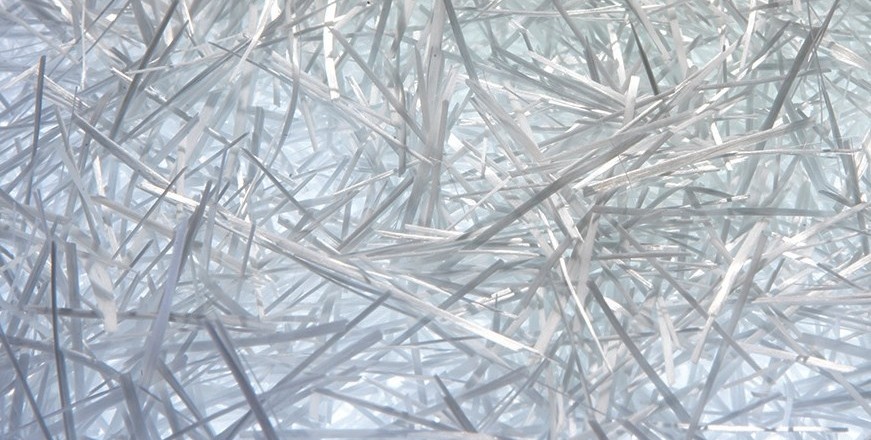Fibers usually used for structural elements in FRP profiles are made of long continuous fiber glass. It is noted that fibers having a tensile strength show the same elasto-brittle behavior, without any impact on work hardening and softening sections. On the contrary, if they are compressed, the response is inadequate against the previous one. It exhibits a homogeneous and symmetric behavior (isotropic) compared to steel.
| Reinforce | Tensile strength [MPa] | Modulus of elasticity [GPa] | Strain at rupture [‰] | Coefficient of longitudinal thermal expansion [10-6 °C-1] | Coefficient of radial thermal expansion [10-6 °C-1] |
| Carbon fiber | 2400 – 5700 | 290 – 400 | 3 – 18 | -1,6 – 0,1 | 7 – 12 |
| Aramid fiber | 2400 – 3150 | 62 – 142 | 15 – 44 – 3 | 60 | / |
| Glass fiber | 3300 – 4500 | 72 – 87 | 48 – 50 | 3 – 5 | / |
| PVA fiber | 870 – 1350 | 8 – 28 | 90 – 170 | / | / |
Table 1 – Mechanical performance of main types of reinforced fibers
(Salvatore Russo, “Composite structures”, Hoepli)
The matrix should mainly carry out a function of protection and cohesion of impregnated fibers, also giving rise to material and behavioural continuity of the end product and ensuring the proper transmission of forces into sections. On the contrary, as shown in the following table, characteristic values of the main impregnating resins influence negatively the elastic response, the tensile strength and the compressive strength of the composite.
| Matrix | Longitudinal module of traction Ei [GPa] | Tensile strength si [MPa] | Density g [g/cm3] | Flexural modulus of elasticity [GPa] | Coefficient of thermal expansion [10-6 °C] | Water absorption [%] |
| Polyester | 2.0 – 4.5 | 40 – 105 | 1.2 – 1.4 | / | 50 – 100 | 0.14 – 0.7 |
| Epoxy resin | 2.5 – 4.5 | 50 – 135 | 1.1 – 1.3 | / | 40 – 65 | 0.10 – 0.15 |
| Polyamide | / | 110 – 120 | 1.40 | 3.0 – 5.0 | 90 | 0.20 – 0.30 |
| Phenolic resin | / | 50 – 60 | 1.30 | / | 40 – 120 | 0.10 – 0.20 |
Table 2 – Mechanical performance of main types of thermosetting matrices
(Salvatore Russo, “Composite structures”, Hoepli)
The product deriving from the union of the two materials is not the result of the combination of positive performances of each of them, but a combination of distinctive characteristic components of matrix and fiber: the high tensile strength of fibers is lessened by the poor characteristics of the resin, but it ensures shape ductility, material cohesion and homogeneous mechanical response.
| Material | Density g [gcm3] | Tensile strength [MPa] | Longitudinal modulus of elasticity [GPa] | Strain at rupture [‰] | Coefficient of longitudinal thermal expansion [10-6 °C-1] |
| GFRP (Glass Fiber Renforced Polymer) | 1500 – 2200 | 600 – 800 | 30 – 42 | 14 – 20 | 10 |
| CFRP (Carbon Fiber Renforced Polymer) | 1500 – 2200 | 1200 – 3000 | 110 – 160 | 12 – 15 | 0 |
| AFRP (Aramid Fiber Renforced Polymer) | 1500 – 2200 | 1000 – 1800 | 46 – 72 | 25 – 40 | – 6 |
Table 3 – Mechanical performance of the most common composites materials
(Salvatore Russo, “Composite structures”, Hoepli)
[Coming up the second part of ‘Behaviour of pultruded FRP fiberglass profiles’]




